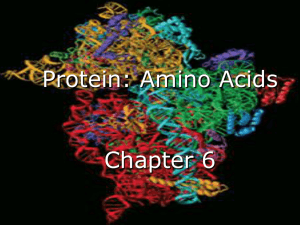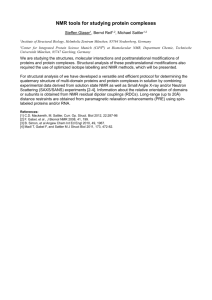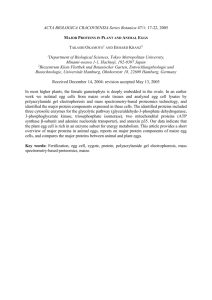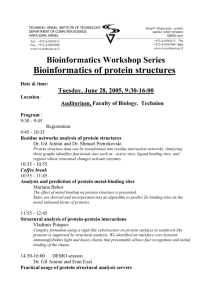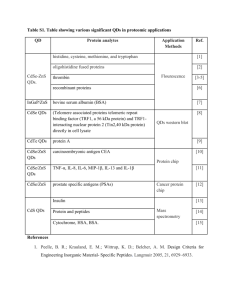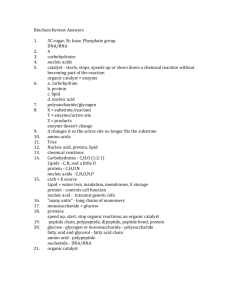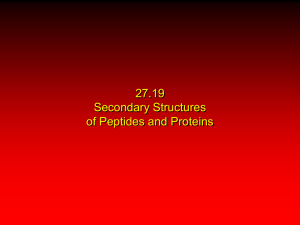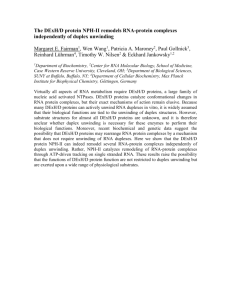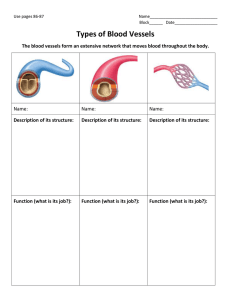Proteins - BioNinja
advertisement
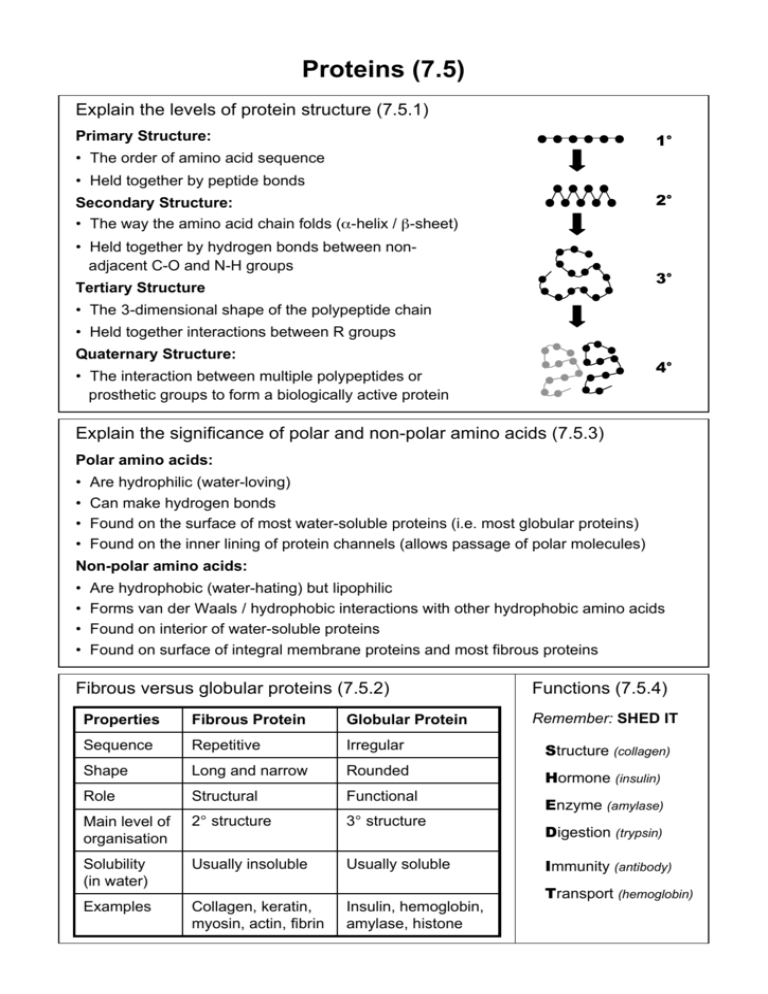
Proteins (7.5) Explain the levels of protein structure (7.5.1) Primary Structure: 1° • The order of amino acid sequence • Held together by peptide bonds 2° Secondary Structure: • The way the amino acid chain folds (α-helix / β-sheet) • Held together by hydrogen bonds between nonadjacent C-O and N-H groups 3° Tertiary Structure • The 3-dimensional shape of the polypeptide chain • Held together interactions between R groups Quaternary Structure: 4° • The interaction between multiple polypeptides or prosthetic groups to form a biologically active protein Explain the significance of polar and non-polar amino acids (7.5.3) Polar amino acids: • • • • Are hydrophilic (water-loving) Can make hydrogen bonds Found on the surface of most water-soluble proteins (i.e. most globular proteins) Found on the inner lining of protein channels (allows passage of polar molecules) Non-polar amino acids: • • • • Are hydrophobic (water-hating) but lipophilic Forms van der Waals / hydrophobic interactions with other hydrophobic amino acids Found on interior of water-soluble proteins Found on surface of integral membrane proteins and most fibrous proteins Fibrous versus globular proteins (7.5.2) Functions (7.5.4) Remember: SHED IT Properties Fibrous Protein Globular Protein Sequence Repetitive Irregular Structure (collagen) Shape Long and narrow Rounded Hormone (insulin) Role Structural Functional Main level of organisation 2° structure 3° structure Enzyme (amylase) Solubility (in water) Usually insoluble Usually soluble Examples Collagen, keratin, myosin, actin, fibrin Insulin, hemoglobin, amylase, histone Digestion (trypsin) Immunity (antibody) Transport (hemoglobin)
